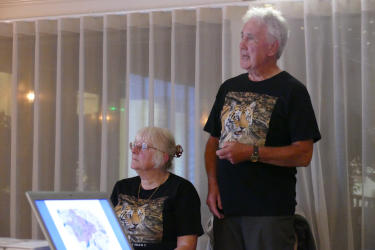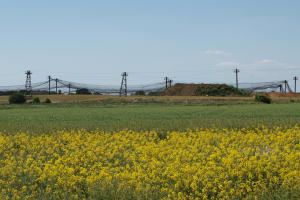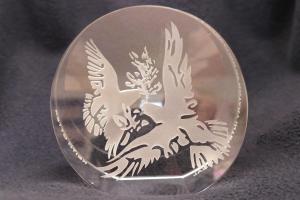Graham Brace: Wildlife of Tanzania
Thu, Sep 30th 2021 at 6:30 pm - 9:30 pm
Tanzania's fauna. This meeting was held at Little Channels.

Today’s meeting was at Little Channels. Our speakers were Graham and Mary Brace, who gave us an illustrated talk about the wildlife of Tanzania, which they have visited many times.
 They showed us a map of the annual wildebeest migration through the Serengeti and up into the Masai Mara. The wildebeest take the same route every year, following the fresh grass. The large predators follow the wildebeest, of course, and the wildebeest also have to get past the crocodiles as they cross the Mara River.
They showed us a map of the annual wildebeest migration through the Serengeti and up into the Masai Mara. The wildebeest take the same route every year, following the fresh grass. The large predators follow the wildebeest, of course, and the wildebeest also have to get past the crocodiles as they cross the Mara River.
They had many fine photographs of Tanzanian wildlife. These included lions, leopards and cheetahs and smaller predators like jackals and “genet cats”, which are not cats at all but related to mongooses.
There were also photographs of herbivores, like the wildebeest themselves, eland, Thomson’s Gazelles and giraffes. In most cases Graham and Mary had managed to capture not only groups of animals of particular species but individuals, pairs or threesomes as well. Graham said he thought three animals made for a nicely balanced picture.
Elephants and hippopotamuses are more impressive herbivores. The hippos spend most of their day in water because their legs are not strong enough to support them for long periods. They come out to feed when the sun goes down. They can be dangerous, with teeth six inches long.
In general it is easy to get near to the animals because they have become so used to human beings in vehicles. Indeed, their curiosity may cause them to come closer to inspect you. It is safe provided you remain in your vehicle as the animals are only conscious of the vehicle as a whole and do not see the passengers as separate.
Tanzania has a wide variety of colourful and interesting birds, ranging in size from small kingfishers to the Marabou Stork, reputed to be the tallest stork species in the world. People will be familiar with flamingos with their pink colouring and strangely-shaped beaks. The area is also home to eagles and owls. Surprisingly to us, the owls are awake and alert during the day.
Graham and Mary did not show us any photographs of insects but they did have a photograph of a termite nest which they reckoned stood about six feet tall.
There was also a thorn tree in that picture. One of the largest African trees is the baobab, which is one of the longest-lived trees in the world. One in Tanzania is thought to be about 6,000 years old. Graham and Mary did not have a photograph of that tree but they did have one of a mere stripling of 150 years or so, which had a diameter of about fifteen feet.
We are only able to mention here some of the photographs Graham and Mary showed us. The slideshow lasted some 45 minutes.
'What We Do' Main Pages:










